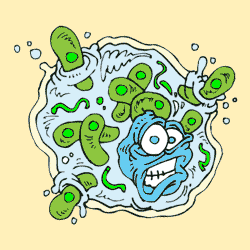 The AIDS pandemic has now been running for three decades. It has killed some 25 million people, and another 34 million people are living with immunodeficiency virus. Despite extensive research and enormous expenditure and efforts, there is still no available cure; and yet, according to the director of the US National Institute of Allergy and Infectious Diseases, Anthony Fauci, it may be possible to end the pandemic even without a cure.
The AIDS pandemic has now been running for three decades. It has killed some 25 million people, and another 34 million people are living with immunodeficiency virus. Despite extensive research and enormous expenditure and efforts, there is still no available cure; and yet, according to the director of the US National Institute of Allergy and Infectious Diseases, Anthony Fauci, it may be possible to end the pandemic even without a cure.
AIDS, as well as being a common cause of death, has been one of the key factors keeping people in poverty in Africa. Illness leads to inability to earn income for those infected, and loss of productivity for businesses that employ them. It also leads to impoverishment when all of a household’s funds are spent on expensive medicine or medical treatment. Additional financial burdens are placed on surviving family members who must care for orphans.
Although there is no cure for AIDS, there are effective treatment regimes which can keep people alive indefinitely. As a result of education and preventative measures, the rate of new infections in most countries has fallen. For example, in Kenya the prevalence of HIV infection has fallen from a high of 13.4% in 2000 to around half that amount.